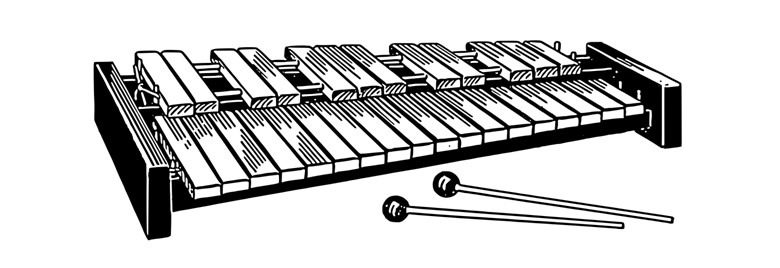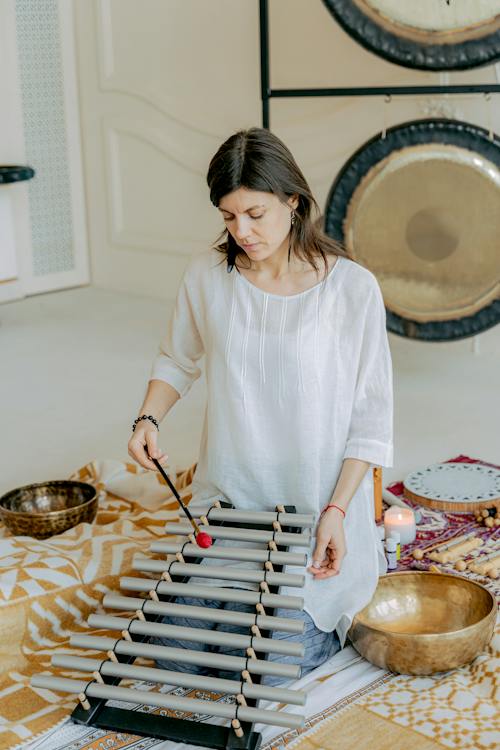A xylophone is a percussion instrument that is able to play melodies. Unlike the glockenspiel, whose bars are made out of metal, the xylophone has wooden bars that are struck by mallets. Its keys are also tuned and arranged like the piano keys. Each of its bars is tuned to a pitch of either pentatonic or heptatonic. Sometimes, they are also tuned in diatonic, for kid’s instrument, and chromatic when used in an orchestra.
The term xylophone came from the Greek words xylon, meaning wood, and phōnē,which means sound or voice. This term may also generally used to include instruments like the marimba, balafon, or semantron. However, this term was specifically referred to as chromatic instruments that have a higher pitch range than the marimba. What distinguishes the sound of the xylophone is the precision it creates and its lack of resonance.
Furthermore, the xylophone’s octave positions are often difficult to hear correctly, especially the highest register. It is because of the more significant proportion of the higher partials. With that, it is necessary to transpose the parts of the individual xylophone to an octave down to meet the requirements of the room. Meanwhile, its sound depends on the hardness, as well as the diameter of its mallet head. If the mallet is harder, the higher the number of partials will sound, and the brighter and shriller the timbre will be. However, a softer mallet tends to damp the higher partials. With that, its timber becomes softer and rounder. The xylophone’s mallet is usually made out of the poly ball, rubber, or acrylic. Wooden mallets like those that are made of ebony, rosewood, birch, or other hardwoods usually produce lighter tones.
As aforementioned, the xylophone bars are made out of woods. Sometimes, it also varies from synthetic materials like fiberglass, which produces louder sounds. Small xylophones usually have about 2 ½ octaves, but concerto xylophones have a higher octave of 3 1/2 to 4 octaves. Much like the glockenspiel, the xylophone has tube resonators below its bars in order to enhance the sustain and tones that it produces. Moreover, its frames are made of wood or steel tubing. Expensive xylophones have height adjustments and stand.

Earlier evidence of a real xylophone was from Southeast Asia in the 9th century. Meanwhile, a similar hanging instrument, which is a type of harmonicon, was said to exist in China somewhere in 2000 BC. Additionally, other xylophone-like instruments were found in different parts of Asia, like the ranat, that was used by the Hindu regions. In Indonesia, they also have their own type of xylophone. For instance, they have the Garantung in North Sumatra, and Java and Bali have their Gambang in gamelan ensemble. Additionally, in Myanmar, their xylophone is named Pattala, which is also made out of wood.
In Africa, they use the term marimba in various traditional folk instruments like the African balafon, a gourd-resonated xylophone. Early forms of this instrument were constructed at the top of a gourd that served as the resonator. In making their xylophone, the woods are roasted in the fire before they shaped the key into their desired tone. Following that, the resonators were tuned to the key based on their size and diameter of its mouth. Like the xylophone, the African balafon also has a mallet, which is used in striking the balafon. These mallets were made out of natural rubber that was taken from a wild creeping plant. Aside from the balafon, Africa also has the Mbila, Gyil, and Silimba, which shares similarities with the xylophone.

